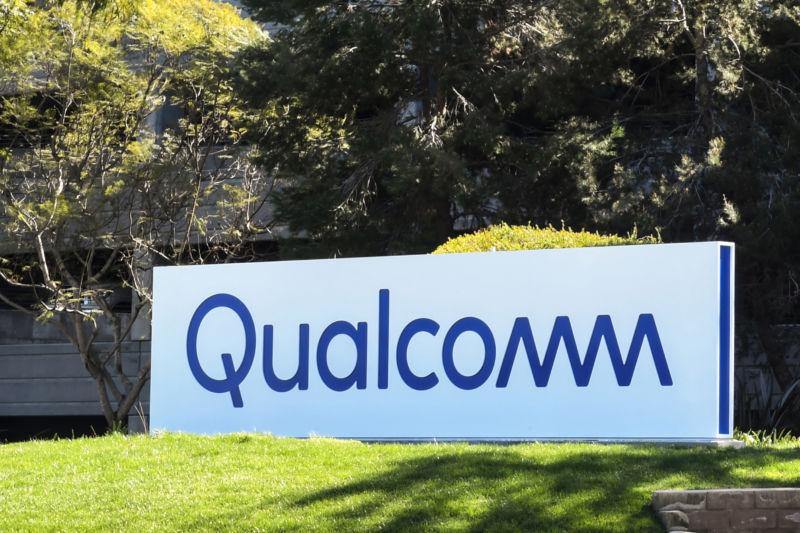
Enlarge / A Qualcomm sign. (credit: Qualcomm)
Arm is facing down its biggest competition ever, with the up-and-coming RISC-V architecture threatening to unseat it as the CPU at the center of almost every portable device. Now, one of Arm's biggest customers is trying out RISC-V, as Qualcomm is getting involved in a joint venture dedicated to the architecture.
The joint venture doesn't have a name yet, but Qualcomm, NXP, Nordic Semiconductor, Bosch, and memory giant Infineon are all teaming up to form a new company that Qualcomm's press release says is "aimed at advancing the adoption of RISC-V globally by enabling next-generation hardware development." At first, the group will be focused on automotive uses, with an "eventual expansion" to IoT and mobile, Qualcomm's biggest market.
Arm doesn't manufacture any chips itself and instead exists as a design and licensing operation. It licenses both the Arm architecture, allowing companies to design an Arm-compatible chip themselves (this is what Apple does), and it also licenses completed CPU designs, allowing partners like Qualcomm, Samsung, and MediaTek to produce new SoCs year after year.
Read 6 remaining paragraphs | Comments

Enlarge / A Qualcomm sign. (credit: Qualcomm)
Arm is facing down its biggest competition ever, with the up-and-coming RISC-V architecture threatening to unseat it as the CPU at the center of almost every portable device. Now, one of Arm's biggest customers is trying out RISC-V, as Qualcomm is getting involved in a joint venture dedicated to the architecture.
The joint venture doesn't have a name yet, but Qualcomm, NXP, Nordic Semiconductor, Bosch, and memory giant Infineon are all teaming up to form a new company that Qualcomm's press release says is "aimed at advancing the adoption of RISC-V globally by enabling next-generation hardware development." At first, the group will be focused on automotive uses, with an "eventual expansion" to IoT and mobile, Qualcomm's biggest market.
Arm doesn't manufacture any chips itself and instead exists as a design and licensing operation. It licenses both the Arm architecture, allowing companies to design an Arm-compatible chip themselves (this is what Apple does), and it also licenses completed CPU designs, allowing partners like Qualcomm, Samsung, and MediaTek to produce new SoCs year after year.
Read 6 remaining paragraphs | Comments
August 04, 2023 at 09:40PM

Post a Comment